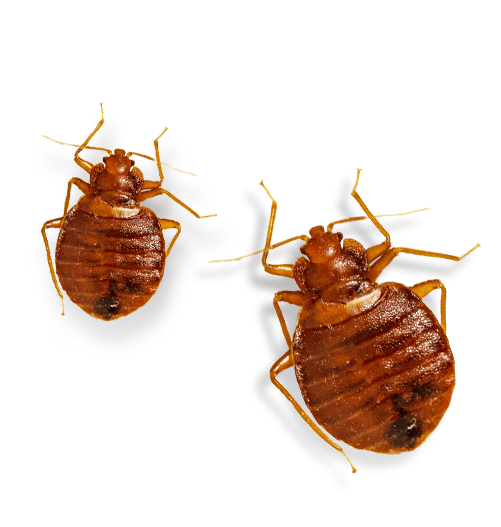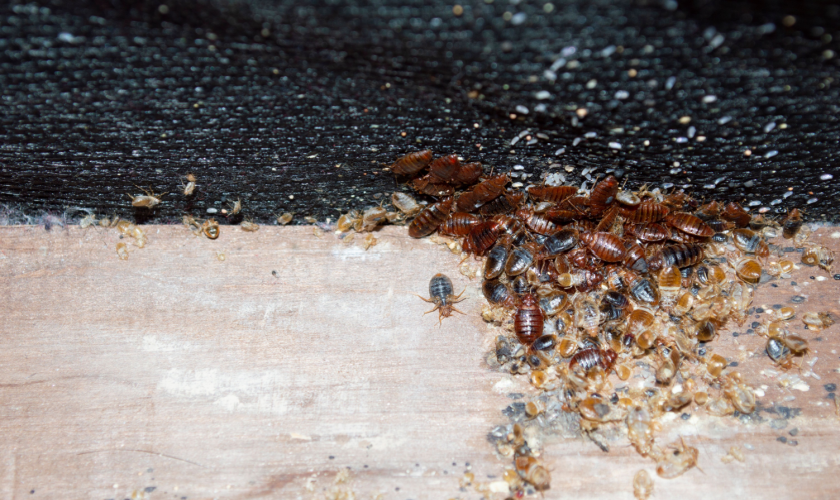A1 Bed Bug Extermination Houston: Specialist Providers
Wiki Article
Recognizing the Lifecycle of Bugs for Targeted Control Methods
Understanding the lifecycle of parasites is an essential aspect of effective parasite administration strategies. By understanding the numerous phases of advancement that bugs undertake, a much more targeted and accurate strategy can be taken on to control their populaces. This expertise not just clarifies the vulnerabilities within the bug lifecycle but likewise paves the way for carrying out calculated procedures that can interrupt their development and recreation cycles. Through a deeper understanding of how insects grow and advance, customized control methods can be created to attend to certain factors in their lifecycle, ultimately causing even more successful bug management outcomes.Relevance of Comprehending Parasite Lifecycle
Comprehending the lifecycle of parasites is crucial for establishing effective and targeted control techniques in bug administration. By comprehending the numerous stages an insect goes via from egg to adult, bug control specialists can identify prone factors in the lifecycle where treatment can be most effective.In addition, recognizing the certain ecological conditions needed for each stage of the bug's lifecycle can lead decisions on environment alteration or exemption methods to interrupt the lifecycle and minimize pest populations. This understanding enables pest management experts to carry out positive procedures instead of counting only on responsive therapies, bring about even more long-term and lasting pest control remedies. Inevitably, a complete understanding of parasite lifecycles empowers pest control experts to tailor their techniques properly, lessening ecological effects and making best use of control outcomes.
Secret Phases in Pest Advancement
To properly implement targeted control methods in parasite management, a critical aspect exists in adequately identifying and understanding the crucial phases in pest advancement. Parasite development usually includes a number of key phases that are essential for their lifecycle and monitoring. The initial stage is the egg phase, where parasites lay eggs that later hatch out into larvae. Larvae then progress right into pupae, a stage where they undertake metamorphosis prior to emerging as grown-up pests. Recognizing these stages is essential as it aids in pinpointing weak spots in the lifecycle where control procedures can be most reliable.

Susceptabilities in Insect Lifecycle
Throughout the different stages of an insect's lifecycle, distinct susceptabilities emerge that can be purposefully targeted for effective control steps. One important vulnerability depends on the egg phase, where insects are usually more vulnerable to certain pesticides or biological control representatives as a result of their soft outer shell, making them much easier targets for intervention. In addition, the larval or nymph phase provides vulnerabilities as parasites undergo fast development and growth, requiring high energy usage that can be manipulated by disrupting their food sources or presenting development preventions. Pupal stages, defined by stability and change, supply a window for targeted control with physical obstacles or particular therapies that prevent successful appearance. Adult parasites, while much more durable due to their reproductive capacity, can still be prone during breeding or egg-laying tasks, which can be disrupted via scent traps or sanitation methods. Understanding these susceptabilities in the pest lifecycle is essential for developing reliable and precise control techniques that successfully manage insect populaces while lessening environmental effect.Implementing Targeted Control Measures

Carrying out targeted control measures commonly includes a multi-faceted strategy. This may consist of habitat alteration to make the environment much less hospitable to bugs, such as removing standing water for mosquito control or securing entry factors for rats. Additionally, organic control approaches can be used, where all-natural killers or pathogens are presented to maintain insect populaces in check.
Chemical control, such as the mindful application of chemicals, is an additional typical strategy. It is crucial to use these compounds carefully to minimize environmental influence and potential harm to non-target types - A1 Bed bug Exterminator houston. Integrated Bug Monitoring (IPM) strategies that combine various control steps in a worked with and lasting fashion are usually the most effective in achieving long-term pest management goals. By executing targeted control steps based upon a comprehensive understanding of bug lifecycles, parasite populaces can be pop over to this site properly regulated while reducing dangers to human health and wellness and the atmosphere.
Improved Parasite Monitoring Practices

Furthermore, the consolidation of organic control agents, such as all-natural killers or pathogens of parasites, can help in reducing reliance on chemical pesticides and advertise an extra balanced environment. Applying physical barriers and traps can likewise belong to boosted pest administration methods, using safe and targeted solutions for insect control. Furthermore, the usage of scents and various other semiochemicals can disrupt pest mating patterns and communication, causing lowered insect populations gradually.
Conclusion
By identifying vital phases in insect development and susceptabilities in their lifecycle, targeted control procedures can be applied to lessen insect populations. Enhanced parasite administration methods can help lower the dependence on broad-spectrum chemicals and advertise more environmentally pleasant and lasting insect control methods.Understanding the lifecycle of insects is vital for developing effective and targeted control methods in insect management. By understanding the various phases an insect goes through from egg to grownup, bug control experts can identify vulnerable factors in the lifecycle where intervention can be most effective. Eventually, a complete understanding of insect lifecycles empowers bug control specialists to customize their approaches efficiently, optimizing and minimizing ecological effects control results.
By carrying useful link out targeted control measures based on a thorough understanding of parasite lifecycles, bug populations can be effectively regulated while lessening threats to human health and the setting.
By determining vital stages in insect growth and susceptabilities in their lifecycle, targeted control actions can be carried out to minimize insect populaces.
Report this wiki page